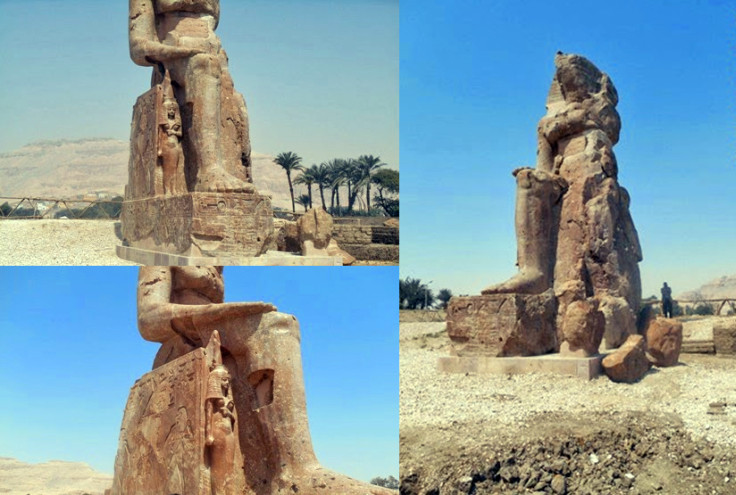Ancient Egypt: Two More Colossal Pharaoh Amenhotep III Statues Raised in Luxor

Archaeologists have succeeded in restoring and raising two additional massive statues of Pharaoh Amenhotep III to match the 3,400 year-old Colossi of Memnon that already stand in Luxor, according to AFP.
In February, it was announced that the archaeological team, led by renowned Egyptologist Hourig Sourouzian had discovered quartzite pieces buried at the entrance of Amenhotep III's mortuary temple in Luxor.
Amenhotep III's reign was one of the most prosperous and his mortuary temple covered 350,000 square metres, the largest temple complex ever built in ancient Egypt.
An ancient earthquake in 27BC destroyed the temple, and while most of it remains buried or lost, the twin colossal statues at the temple's eastern gate, which we know as the Colossi of Memnon, were merely shattered, so they were rebuilt and still stand today.
Now there are four
The pieces that were buried at the entrance of the mortuary temple have been restored and two additional colossal statues of Amenhotep III have been raised to their original sites at the temple.
"The world until now knew two Memnon colossi, but from today it will know four colossi of Amenhotep III," Sourouzian told a press conference on Sunday unveiling the statues.
"The statues had lain in pieces for centuries in the fields, damaged by destructive forces of nature like earthquake, and later by irrigation water, salt, encroachment and vandalism. This beautiful temple still has enough for us to study and conserve."
The Colossi of Memnon and Amenhotep III Temple Conservation Project, led by Sourouzian and German Egyptologist Rainer Stadelmann, have been working to save and raise the Colossi of Memnon since 1998.
Sourouzian dreamed as a student of conserving the Amenhotep III temple.
"Every ruin, every monument has its right to be treated decently. The idea is to stop the dismantling of monuments and keep them at their sites," she said, adding that steady "international funding" is essential for the preservation of world heritage sites.
Restored statues
One of the restored statues is very similar to the Colossi of Memnon. Depicting Amenhotep III seated, the statue stands at 11.5 metres tall with a base 1.5 metres high and 3.6 metres wide, although it would originally have stood at 13.5 metres high with the double crown of Upper and Lower Egypt, which is missing.

The statue weighs 250 tonnes and the pharaoh is depicted wearing the royal pleated kilt secured at the waist by a large belt. By his right leg stands an almost complete figure of Amenhotep III's wife Tiye, wearing the traditional Egyptian wig and slim-fitting dress.
The sides of the statue contain carved reliefs on each side showing the unification of Upper and Lower Egypt, but the statue of queen mother Mutemwya, who would originally have sat by his left leg, is missing.
The second statue to be restored depicts Amenhotep III standing, and has been raised at the north entrance of the temple.
Several other pieces belonging to other statues in the funerary complex were shown to reporters, such as a well-preserved head of Amenhotep III made from alabaster that has eyes, ears and nose all intact.
© Copyright IBTimes 2025. All rights reserved.





















